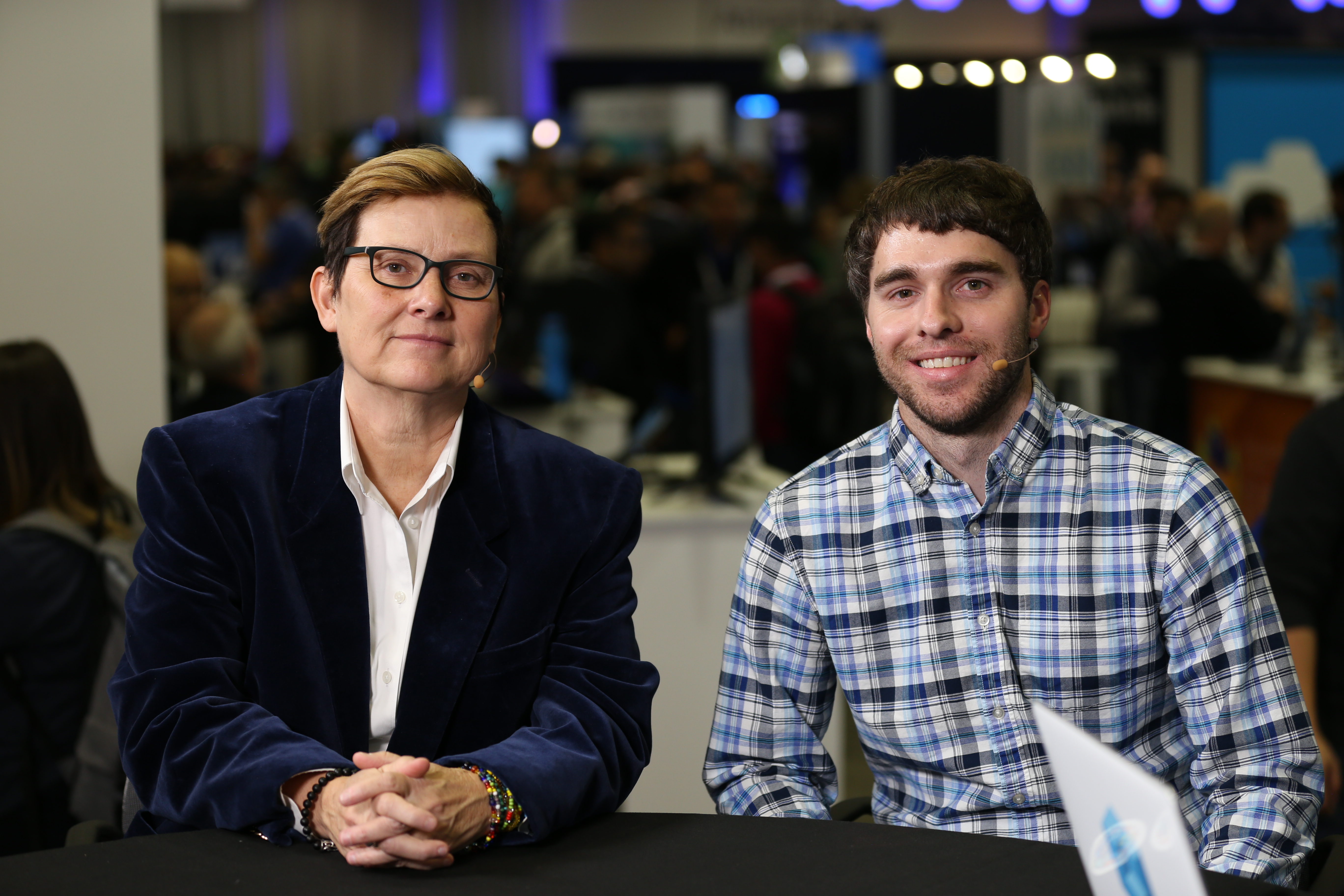 EMERGING TECH
EMERGING TECH
 EMERGING TECH
EMERGING TECH
 EMERGING TECH
EMERGING TECH
What is the maturation of the Kubernetes open-source container-orchestration system good for? Open source has kneaded and Karate-chopped the kinks out of the platform for orchestrating containers (a virtualized method for running distributed applications). So now what? It runs more reliably in enterprises. There’s that. It might also run a whole stack much the same way it runs a containerized app.
This was the talk coming out of the recent “Kubernetes Operators” deep-dive discussion at KubeCon + CloudNativeCon event in Seattle, Washington. A packed room devoured the details as security guards blocked frustrated late arrivals.
Operators are set to be one of the hottest attractions to evolve from Kubernetes so far, according to Diane Mueller (pictured, left), director of community development at Red Hat Inc. “I think the next big thing that we’re really focusing on and that’s a game changer for all the second day operations type things is …. the rise of Kubernetes Operators,” she said.
Mueller and Rob Szumski (pictured, right), principal product manager at Red Hat, spoke with John Furrier (@furrier) and Stu Miniman (@stu), co-hosts of theCUBE, SiliconANGLE Media’s mobile livestreaming studio, during the KubeCon + CloudNativeCon event. They discussed how Kubernetes Operators will do for distributed systems what containers did for apps. (* Disclosure below.)
The CoreOS project introduces Operators to extend the Kubernetes application program interface to manage stateful applications.
“The rise of containers was great, because you could take a single container and package an application and give it to somebody and know that they can run it successfully,” Szumski said. “An operator does that for a distributed system in the exact same way.”
Using all the Kubernetes primitives, and without reinventing service discovery, etc., “you can give somebody an entire Kafka stack or a machine learning stack or whatever it is — these very complex distributed systems — and have them run it without having to be an expert,” Szumski explained.
All of the complex underpinnings are baked into the software. Kubernetes Operators can bring order to multicloud. What users program against when they build an Operator is Kubernetes — not a cloud offering, not Red Hat, OpenShift, etc., Szumski added.
“So you can run MongoDB on-prem, in the cloud, and have it function the exact same by standing up one of these Operators,” he concluded.
Watch the complete video interview below, and be sure to check out more of SiliconANGLE’s and theCUBE’s coverage of the KubeCon + CloudNativeCon event. (* Disclosure: Red Hat Inc. sponsored this segment of theCUBE. Neither Red Hat nor other sponsors have editorial control over content on theCUBE or SiliconANGLE.)
Support our open free content by sharing and engaging with our content and community.
Where Technology Leaders Connect, Share Intelligence & Create Opportunities
SiliconANGLE Media is a recognized leader in digital media innovation serving innovative audiences and brands, bringing together cutting-edge technology, influential content, strategic insights and real-time audience engagement. As the parent company of SiliconANGLE, theCUBE Network, theCUBE Research, CUBE365, theCUBE AI and theCUBE SuperStudios — such as those established in Silicon Valley and the New York Stock Exchange (NYSE) — SiliconANGLE Media operates at the intersection of media, technology, and AI. .
Founded by tech visionaries John Furrier and Dave Vellante, SiliconANGLE Media has built a powerful ecosystem of industry-leading digital media brands, with a reach of 15+ million elite tech professionals. The company’s new, proprietary theCUBE AI Video cloud is breaking ground in audience interaction, leveraging theCUBEai.com neural network to help technology companies make data-driven decisions and stay at the forefront of industry conversations.